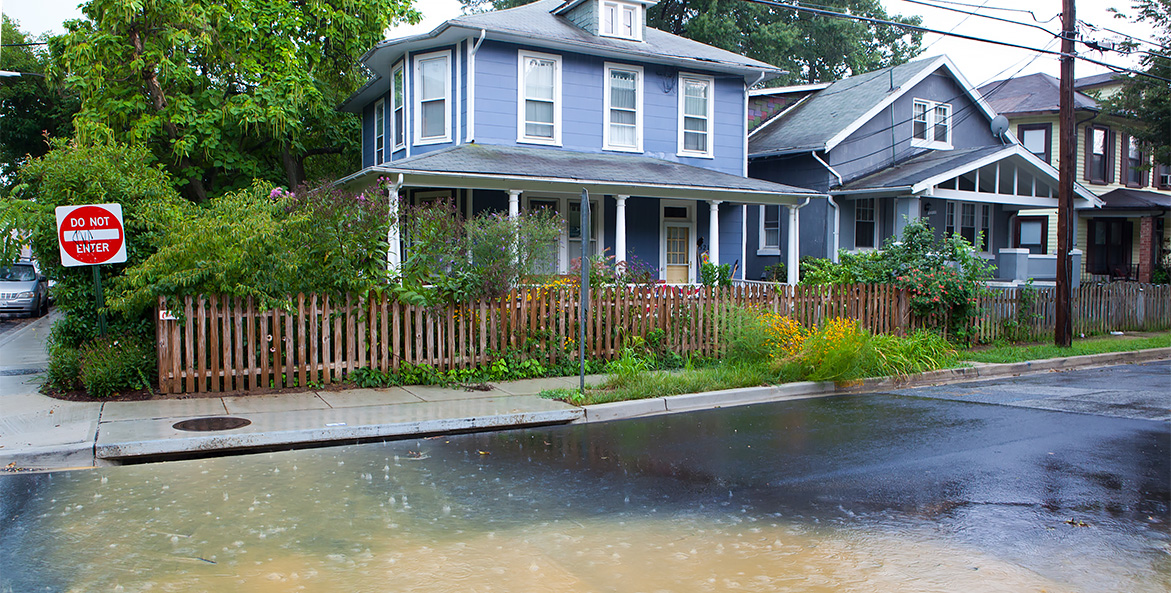This article was originally published in Maryland Matters on September 2, 2024.
Progress and potential. That is how the Environment Protection Agency (EPA) described current Chesapeake Bay cleanup efforts in its latest two-year milestone report.
In its report, the EPA commended states’ achievements toward our 2025 pollution reduction goals. They included reducing pollution from wastewater treatment facilities and agriculture, as well as forest buffer initiatives.
But with Maryland reporting 83 percent to 100 percent achievement toward its goals for nutrient and sediment pollution reduction, some might wonder—why aren’t we seeing more improvement in Bay water quality?
To answer that question, we must dive deeper. Buried in the Chesapeake Bay Program’s (CBP) overview are areas where pollution is actually increasing. The worst offender: stormwater. According to CBP data, between 2009 and 2023, Maryland has made 0 percent progress reducing stormwater pollution. But we have a chance to change that.
Stormwater pollution occurs when oil, grease, sediment and toxins on roads, parking lots, buildings, industrial sites, and other hard surfaces get swept by rain and run through communities and directly into our waterways. Maryland has struggled to make progress on stormwater management in urban and suburban areas. To be clear, 0 percent progress doesn’t mean that Maryland has been resting on its laurels. Rather, the pollution loads from stormwater have outpaced improvements due to intense development pressure and more intense rainfall from climate change.
Yet despite these challenges, Maryland’s stormwater regulations have remained par for the course. Current permits do not keep up with pollution loads, do not account for the latest rainfall data—which has increased 2.63 inches per decade from 2000 to 2020—and often prioritize “check-the-box” practices versus meaningful restoration solutions.
Agricultural, which is the largest land use in Maryland, has achieved progress. Why shouldn’t stormwater?
It’s not just the environment that suffers. Urban and suburban communities are plagued by repeated and sometimes catastrophic flooding, widespread property damage, exposure to harmful chemicals, and tragically, even loss of life. It is often underserved and overburdened communities that bear the brunt of stormwater impacts due to a long history of discriminatory disinvestments in infrastructure. Improving stormwater management is essential for not just water quality, but Maryland’s safety and resilience against climate change.
Stormwater and agriculture pollution are caused by rain-induced runoff, making it harder to address than pollution flowing through a single pipe. But we know how to deal with this type of pollution. In fact, not long ago, Maryland was considered a national leader in green infrastructure, which stops runoff before it can harm Maryland’s people, properties and waterways.
According to EPA’s evaluation, Maryland is predominantly relying on agriculture to meet its remaining 2025 pollution reduction targets. While there is still room for improvement, the agriculture sector has increased conservation, expanded its forest buffer network, and achieved notable reductions for nitrogen and phosphorus since 2009.
Agricultural, which is the largest land use in Maryland, has achieved progress. Why shouldn’t stormwater?
Maryland has several upcoming opportunities to follow suit. Earlier this year, Maryland Department of the Environment (MDE) sought public feedback on a new stormwater permit for the State Highway Administration’s (SHA) extensive network of roads, bridges, and highways. MDE must use this opportunity to improve their permits by including updated rainfall data, requiring the most effective mitigation practices, expanding monitoring requirements, and tracking and addressing pollutants like polychlorinated biphenyls (PCBs) and per- and polyfluoroalkyl substances (PFAS).
These are basic, very achievable changes that can be made right now and have long-lasting impacts on water quality. MDE will soon begin issuing the next round of county and municipal stormwater permits, and improvements to SHA’s permit will set an important precedent.
As an example of what’s at stake, earlier this month Gunpowder Riverkeeper in Harford County had to file an intent to sue the 100-acre Ridgely’s Reserve housing development because of its repeated sediment runoff during rain events. The construction site has caused noticeably muddy water and a decline in underwater grasses in Foster Branch, Gunpowder River and the Chesapeake Bay.
Despite repeated violations, multiple complaints and citations, and media attention, corrective actions have been unsuccessful at stopping the pollution. Gunpowder Riverkeeper and Chesapeake Legal Alliance stepped in to exercise the community’s environmental rights under the Clean Water Act. While agencies have increased inspections of industrial runoff pollution, it’s critical that the next round of stormwater permits are more protective of community health and calibrated to restore the Bay.
We can no longer stay the course on stormwater. The opportunity for corrective action is present, and the many clear solutions outlined should be a top priority for MDE and Gov. Wes Moore’s administration if Maryland wants to meet its pollution reduction goals.
Allison Colden, CBF Maryland Executive Director; Evan Isaacson, Senior Attorney for the Chesapeake Legal Alliance; Kim Coble, Executive Director of the Maryland League of Conservation Voters



